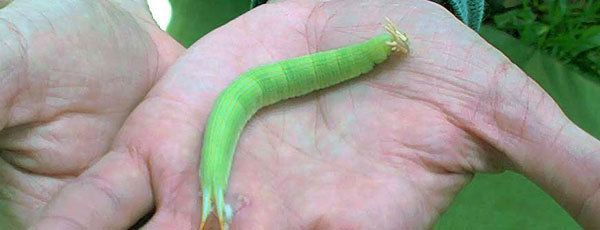Climate Change and Caterpillars in Costa Rica
- San Jose, Costa Rica
- Volunteer Vacations

| from $2,495* per person | 11 Days | December |
| Basic accommodations | Exertion level: 4 | |
| Operator: Earthwatch Institute | 12 people max | |
Loading map, please wait...
Locations visited/nearby
caterpillars , Hunting for Caterpillars in La Selva , earthwatch , volunteer , ecotourism , scientific research , ecology , wildlife surveys , endangered species , wildlife protection , habitat loss , sustainability , Costa Rica
0 testimonials about this trip.
1 testimonial about the provider, Earthwatch Institute:
-
Reviewer: L. Reifschneider
located in
St. Louis,
MO
USA
Elephant conservation is what drives my travel destinations. However, I always come home counting the blessings of new friends and an understanding of a culture and way of life I possibly would otherwise have never been introduced to. Through the Earthwatch projects I participate in, I am learning just how big and wonderful this world is.
Itinerary
On the ExpeditionExplore the fascinating world of caterpillars to see how they protect themselves and respond to changes in their habitats.
Assisting members of Principal Investigator Dr. Lee Dyer's research team, you'll collect caterpillar species and their host plants, identify and observe them in the lab, and analyze plant and caterpillar toxins. Dyer and his staff will teach you all these tasks, giving you the opportunity to learn about ecological dynamics at their most intimate level. In your recreational time, you might play your Costa Rican hosts in a lively game of soccer or volleyball, or take a walk and see some of the area's other inhabitants - such as monkeys, sloths, parrots, and peccaries.
Meals and Accommodations
You'll split your time between the comfortable and contemporary La Selva Biological Station and the more rustic Tirimbina Rainforest Center. At La Selva, you'll enjoy typical Latin American meals, bunk beds, electricity, and hot showers at a modern research facility complete with free internet access and washers and dryers. You may also have the opportunity to meet other researchers based at the station and to learn about a variety of exciting projects.
Tirimbina is a smaller research center, with solar powered cabins deep within the forest. Here, you’ll bond with teammates over shared cooking duties and can take dips in a nearby swimming hole during recreational time.
About the Research Area
Costa Rica is a peaceful democratic republic in Central America, directly north of Panama and south of Nicaragua. The country is split by a ridge of mountains, with four distinct cordilleras or mountain ranges and several dozen volcanoes, seven of which are still active. Biodiversity is very high in Costa Rica and habitats are quite varied, including tropical dry forests, lowland wet forests, montane rainforests, and alpine vegetation.
La Selva and Tirimbina are located in the Caribbean lowlands of Costa Rica near the town of Puerto Viejo de Sarapiqui in Heredia province. The area is at the confluence of two rivers, Rio Sarapiqui and Rio Puerto Viejo. La Selva is composed of primary forest, secondary forest, and abandoned plantations. Tirimbina is just 840 acres in area but has been declared a Costa Rican National Wildlife Refuge and has primary and secondary forest as well as abandoned pasture and cacao plantations.
Like the rest of Costa Rica, biological diversity is very high at the reserves. This diversity includes thousands of species of insects, over 2,000 species of plants, and hundreds of species of birds and mammals. During a typical walk in the area, you’ll see peccaries, coatis, sloths, monkeys, toucans, parrots, and at least a dozen species of butterflies. The 300 species of caterpillars the project works with are only a fraction of the estimated 5,000 species that occur at La Selva (about 4,500 moth species and 500 butterfly species).
More information from Earthwatch Institute:
- View trip on provider's website
earthwatch.org/expeditions/dyer_costarica.html… - Company profile, experience, and history
- View all of their trips
- Email this trip page to a friend
-



Comments from Facebook